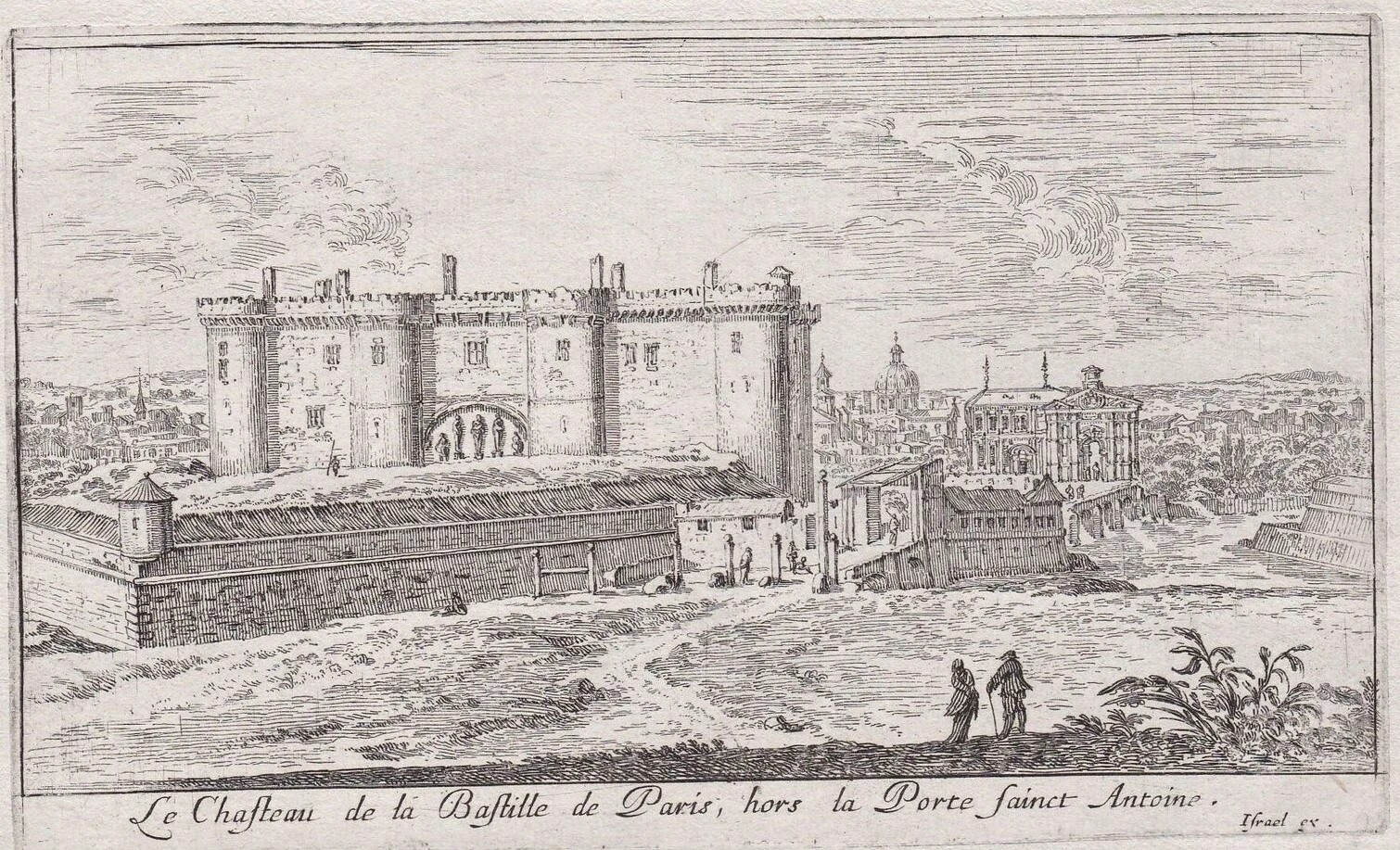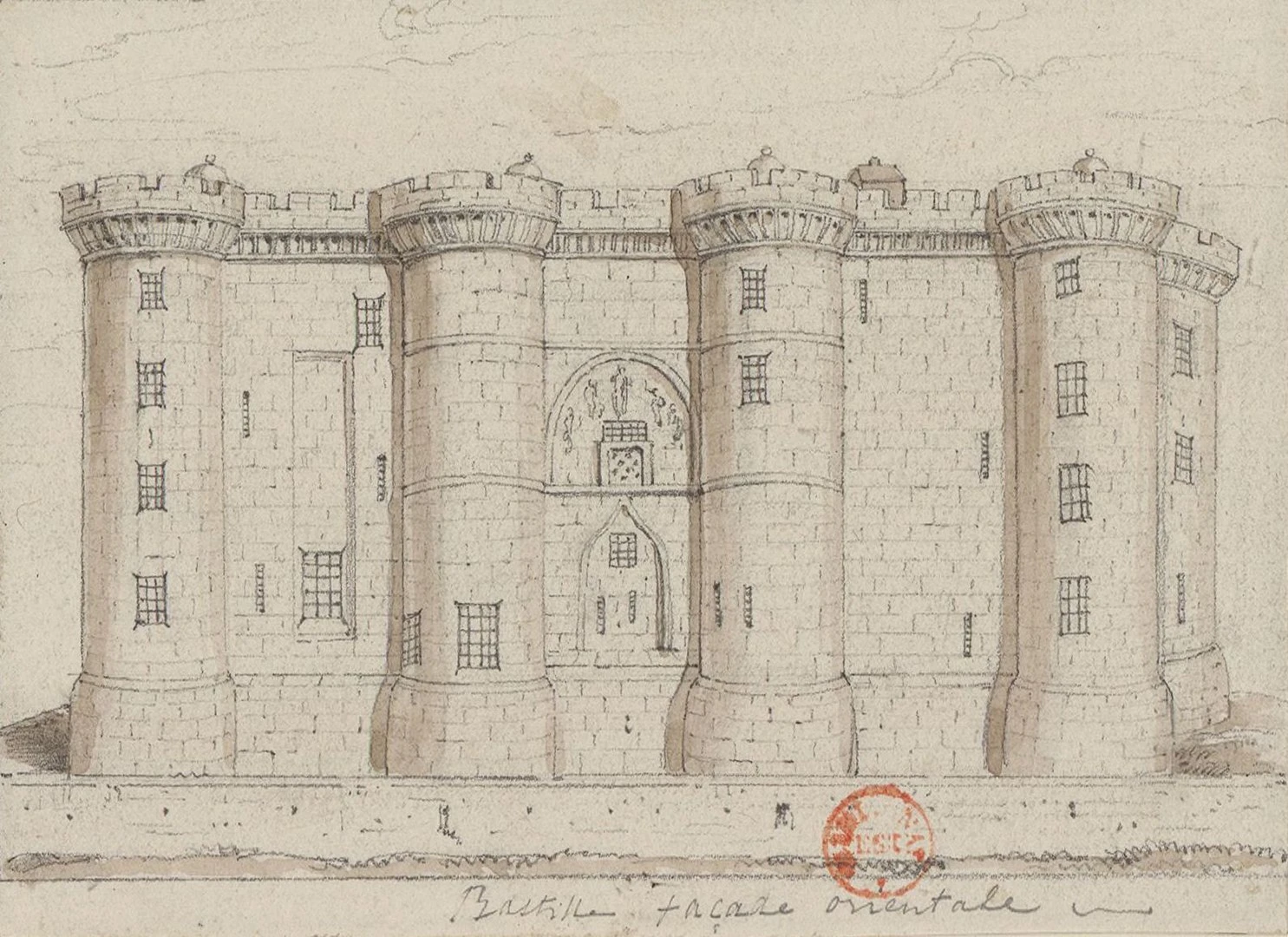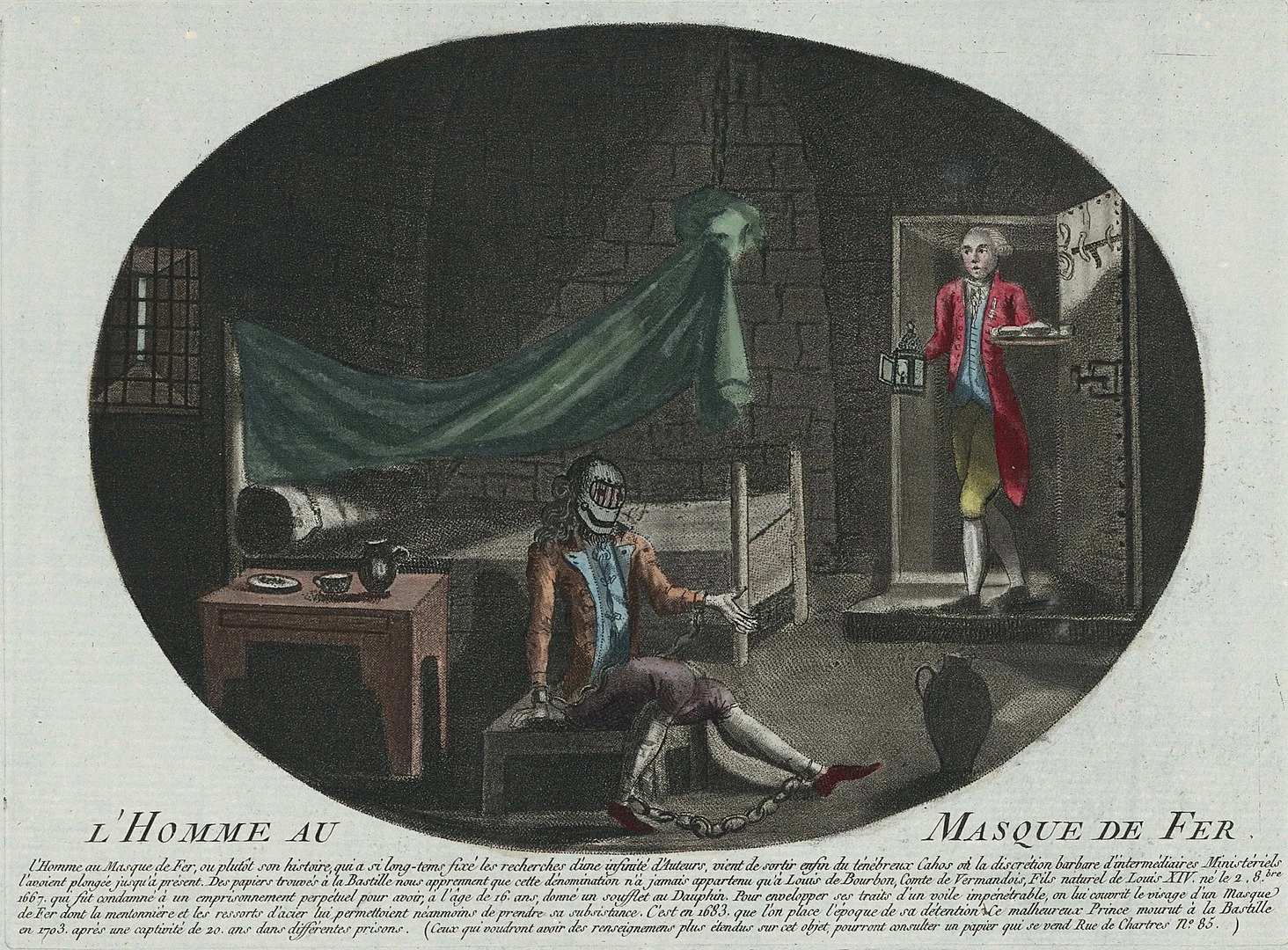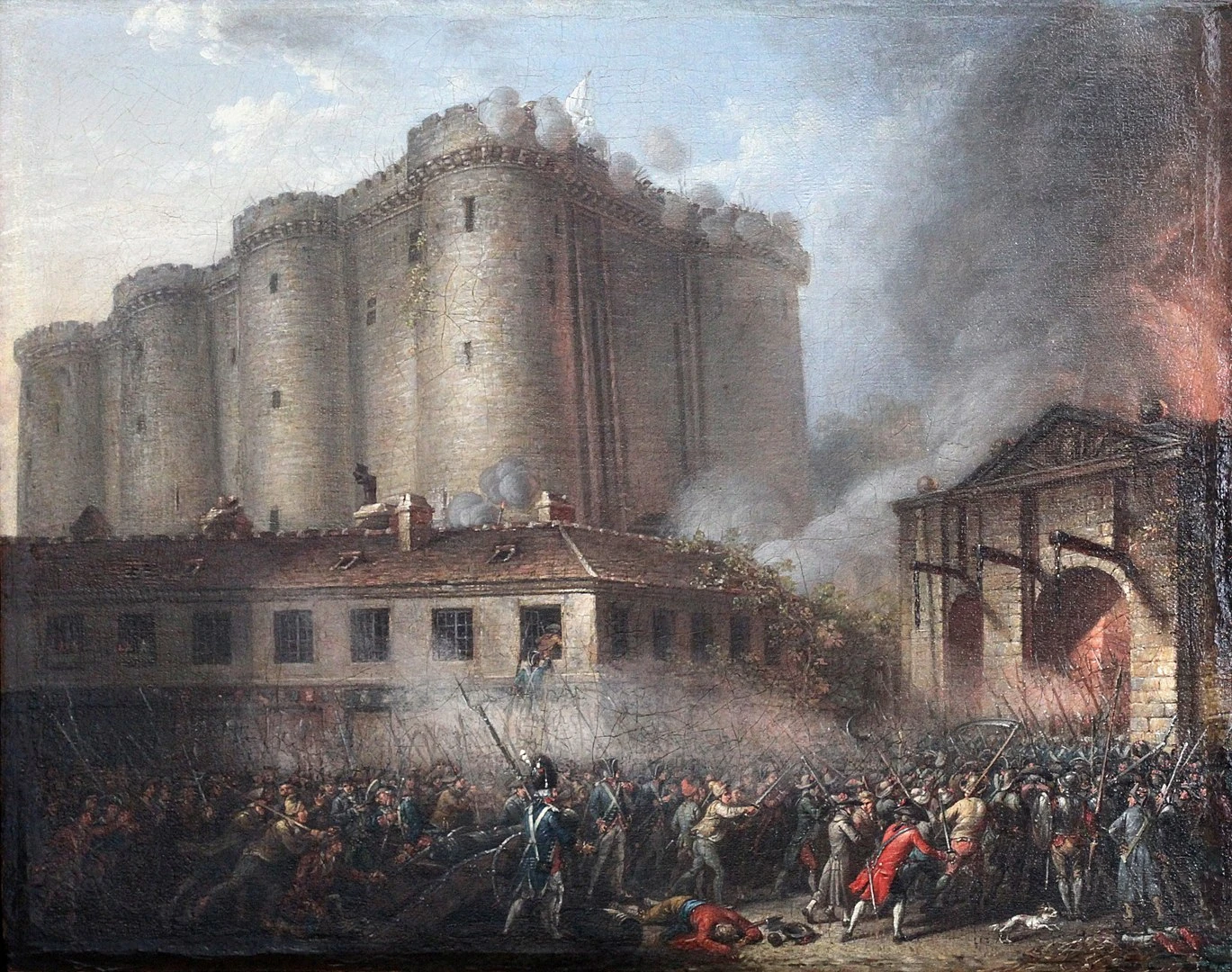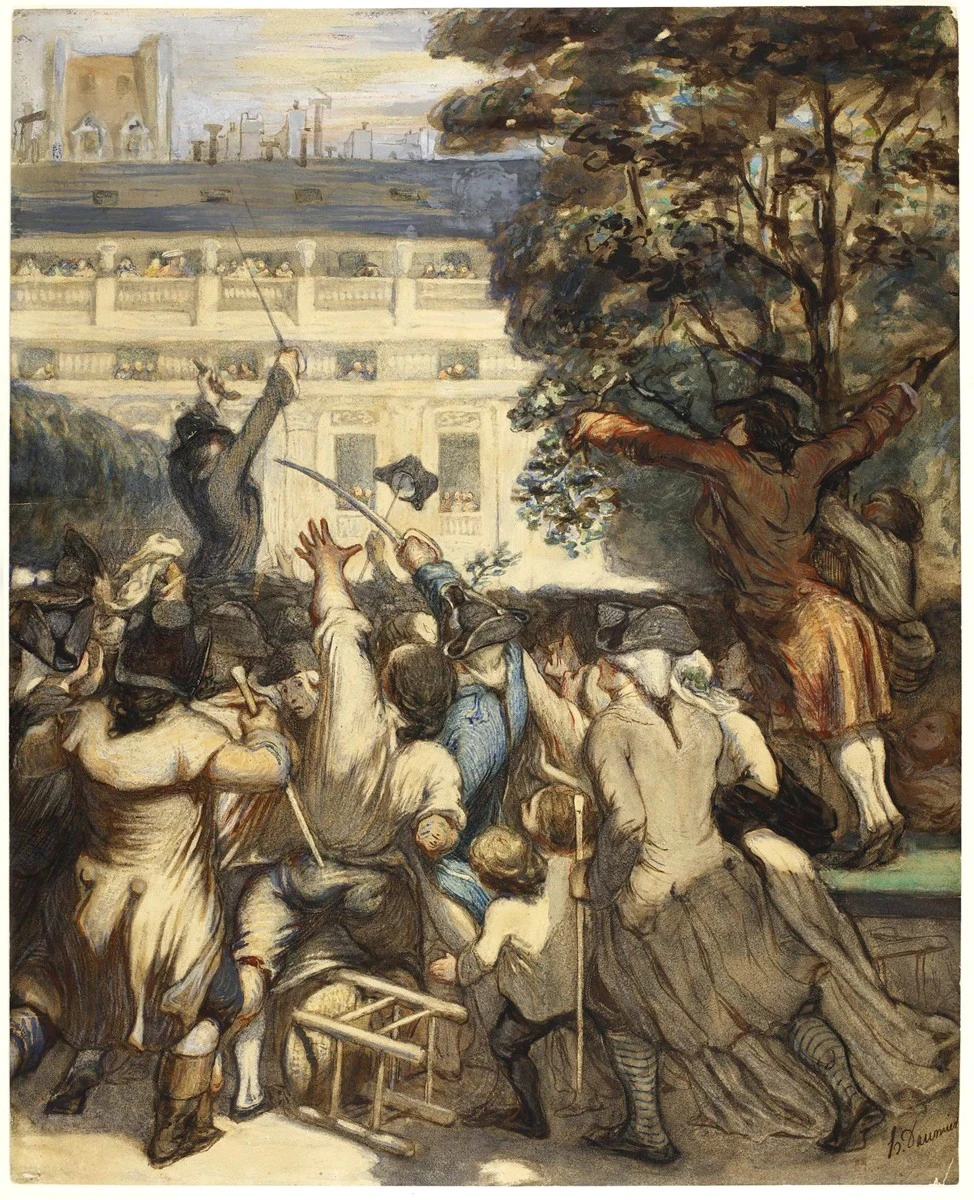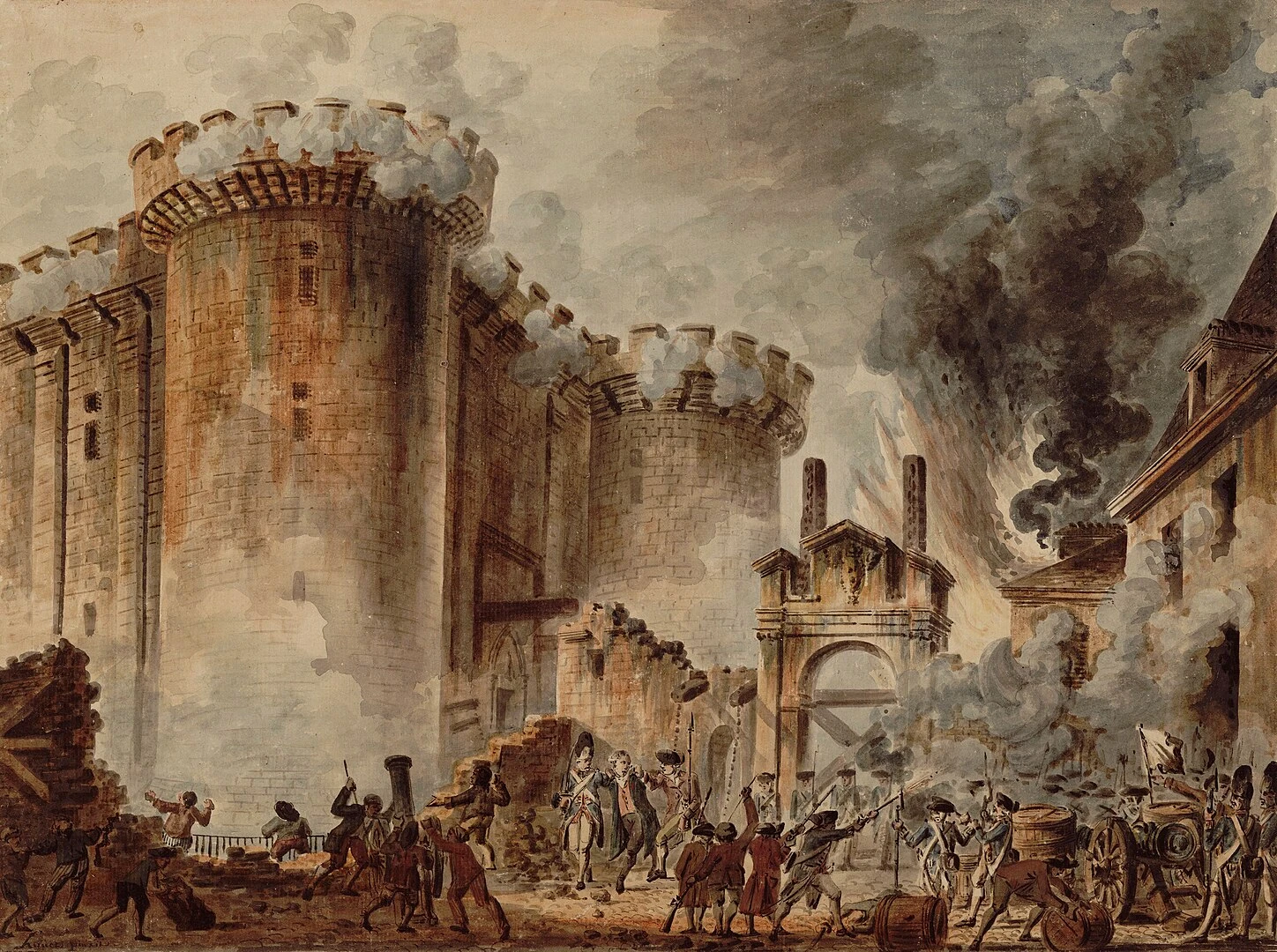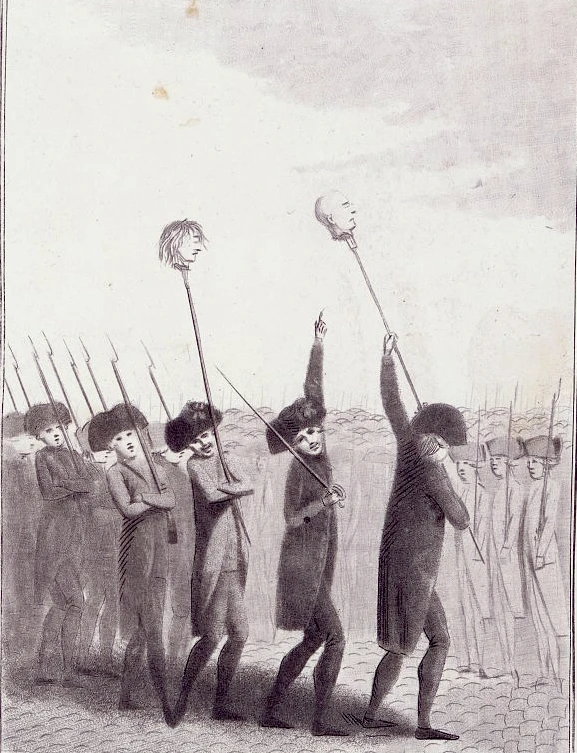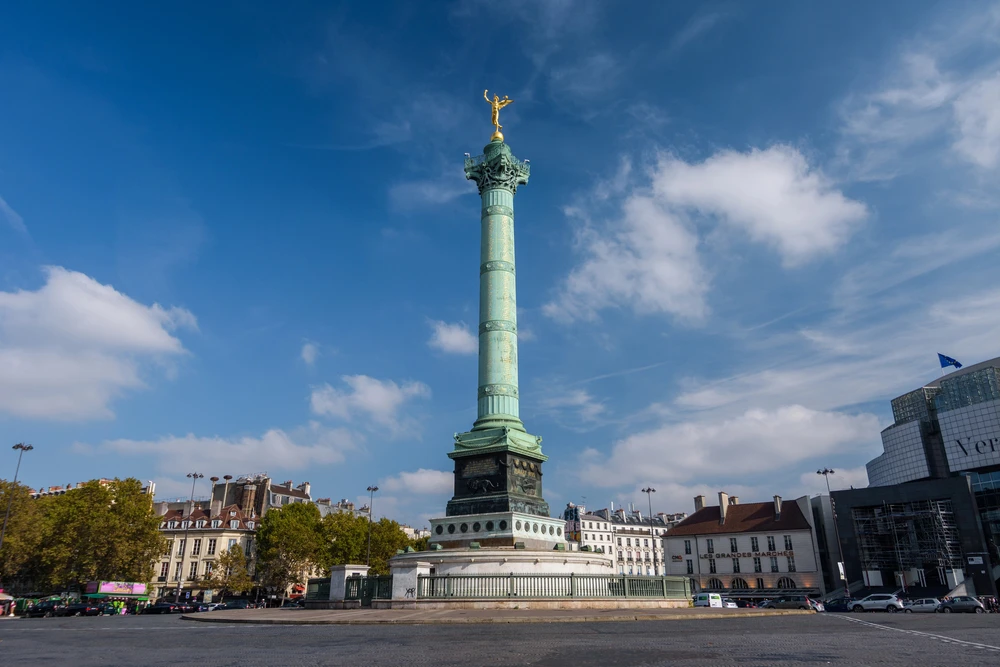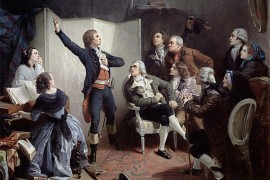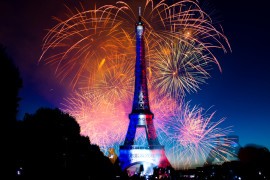What was the Bastille?
The Bastille in 1650 / Illustration chosen by Monsieurdefrance.Com: "Château de la Bastille, avec la porte Saint-Antoine et l'église Saint-Paul-Saint-Louis en arrière plan, par Israël Silvestre - ca. 1650" / Wiki commons / Wiki pedia.
The great fortress of Paris.
A fortress. And not the least.The "Bastille Saint-Antoine" by its real name. Erected at the end of the 14th century to protect the Porte Saint Antoine, it is enormous and dominates the faubourg Saint Antoine: 66 meters long, 34 wide and 24 meters high. It has several roles in the history of Paris. It was an arsenal in the Middle Ages. Henri IV made it his vault, depositing the gold he intended to use to finance a war (which never took place, due to the king's assassination). During the Fronde, it was from the Bastille that the cannons fired on the troops of the young King Louis XIV, during the Fronde, on the orders of the King's cousin Grande Mademoiselle (1627-1683) (she paid for it with exile after the events). The Bastille was above all a state prison, in the 18th century, when the people of Paris launched an assault. It's one of the places where you can lock someone up by lettre de cachet, mostly signed by the king, and without trial. There are other possible places than the Bastille, but it is the symbol of those prisons where people were locked up without trial.
The Bastille state prison
The eastern facade of the Bastille / Pencil drawing site Gallica.fr / BNF.
There were several forms of imprisonment, and some were even rather luxurious. You had a "room", you could correspond with the outside world, manage your affairs and you could entertain (which Marshal de Bassompierre did with his mistresses for years). It was possible to have meals brought in from outside and served by one's servants. You could also eat at the governor's table. This treatment made the prisoners "guests of the king". There were also dungeons where the treatment was not at all the same and whose occupants were called the "pailleux" because they slept on straw on the floor. 6 of the dungeons were putrid, very damp, located at moat level, and prisoners deemed too recalcitrant were locked in them. There was also a torture room. In total, the Bastille could "receive" 45 prisoners simultaneously (although this was increased to 60 under Louis XIV). The Bastille was so expensive, both to maintain the garrison, the prisoners and the governor, whose position brought in so much revenue, that a few years before 1789, plans began to be made to demolish it to create a square in the heart of the Saint Antoine district. This was one of the requests made by local residents in their cahiers de doléances on the eve of the Revolution;
The Bastille of famous prisoners
The man in the iron mask, here imagined in 1789, died at the Bastille in 1703 / Illustration chosen by monsieur de France: wikicommons / wikipedia.
The Bastille has been the place of confinement for many of history's leading figures. For the philosophers of the Siècle des Lumières (the 18th century) it was even worth a patent for insolence. The long list of Bastille prisoners includes Marshal du Biron (16th century), sentenced to death for treason,the famous iron mask (he died there), Voltaire was locked up there twice (in 1717 and and in 1726). The 18th century list also includesthe Marquis de Sade(5 years), andLally Tallendal, accused of making France lose India, whose head was chopped off some time later (a real butchery, with executioner Sanson on a very bad professional day). In all, the Bastille imprisoned over 6,000 people, most of them in 1659 and 1789. On July 14, 1789, only 7 prisoners were freed, including 4 counterfeiters, 2 lunatics (one of whom had become so because he had been forgotten in the Bastille) and a nobleman accused of incest;
What happened on July 14, 1789?
The storming of the Bastille as seen by a contemporary painting (anonymous). By Photograph by Rama, Wikimedia Commons, Cc-by-sa-2.0-en, CC BY-SA 2.0 en, https://commons.wikimedia.org/w/index.php?curid=11341825
The call to arms
For several days, riots had been breaking out in Paris to demand an end to the city's entry fees. On Sunday morning, July 12, news reached Paris of the dismissal of Necker, the minister in whom Parisians were pinning their hopes. One of them, Camille Desmoulins (1760-1794) calls to arms (he will become one of the figures of the Revolution, before perishing on the scaffold). On the morning of July 14, 2 days after Camille Desmoulins' call to arms, Parisians take the Invalides, where weapons are kept, and a crowd then heads for the Bastille.There were two reasons for this: there was gunpowder, which was missing from the weapons found at the Invalides, and there were said to be large reserves of grain, whereas the crowd was calling for the price of bread to be lowered.
Camille Desmoulins calls for arms. Illustration chosen by Monsieurdefrance.com: By Honoré Daumier - https://pushkinmuseum.art/data/fonds/europe_and_america/j/2001_3000/zzh_1776/index.php?lang=en, Domaine public, https://commons.wikimedia.org/w/index.php?curid=99964642
The assault
The crowd (rumored to number 80,000) arrives at 10:00 a.m. in front of the fortress to demand its openingand the gunpowder, and wheat assumed to be inside. Governor Bernard-René Jordan de Launay (1740-1789) refuses. Three delegations are sent to him (one of which is invited to lunch), but negotiations fail, while tensions are running high outside. Cannons are installed in front of the Bastille, 2 of which are over 100 years old and more works of art than cannons, since they were gifts to France from the King of Siam. Never mind, we'll get them working. The Bastille is defended by 82 invalid soldiers, appointed to occupy it. In addition, there were 32 Swiss mercenaries, the only soldiers truly fit to fight;
The storming of the Bastille and the arrest of the Marquis de Launay. Illustration chosen by monsieurdefrance.com: By Jean-Pierre Houël - Bibliothèque nationale de France, Domaine public, https://commons.wikimedia.org/w/index.php?curid=106405
At 11:30 am, the sound of an explosion sets everything off. The rioters storm the pont levis, breaking its chains with axes. At 1:30 pm, the Bastille garrison fired on the crowd. At 3:30 pm, well-armed French guards, accompanied by cannons, join the assault on the fortress. There are more than 100 dead on the rioters' side when the Marquis de Launay decides to finally open the gates officially on condition that no harm is done to the soldiers (who, incidentally, brandish the white flag and their weapons with their butts in the air).
The results of the storming of the Bastille
7 prisoners are freed. The fortress is looted. As the soldiers, who have surrendered, are led to the town hall for trial, the mob seizes them and especially their leader: the Marquis de Launay, who is brutalized and killed. A butcher cuts off his head with a knife. She's stuck to the end of a pike and carried through Paris to cheers. King Louis XVI learned the news the next morning, July 15, at 8am as he was waking up. Legend has seized on this moment and tells us that Louis XVI learned the news in this way: the Duc de La Rochefoucault-Liancourt approaches the king and says "Sire, the people have taken the bastille". Louis XVI looks at La Rochefoucault and says "he's taken the Bastille? Is it a revolt?" and the duke replies to the king "non Sire. C'est une révolution".
The heads of Governor de Launay and Jacques de Flesselles, the last provost of Paris, are carried at the end of pikes. Illustration chosen by monsieurdefrance.com : Wikipedia.
On July 17, Louis XVI comes to Paris. There he meets La Fayette and the first mayor of Paris: Bailly. It was on this day that the French flag was born. A cockade was presented to the king, with white, the color of the monarchy, surrounded by blue and red, the colors of Paris, to symbolize the reconciliation between Paris and its king;
What became of the Bastille after July 14, 1789?
The Place de la Bastille today. Photo chosen by monsieurdefrance.com: vitormarigo via depositphotos
It was destroyed in just over 20 years. Work, completed in 1806, began the following day, July 15. Most of the building's stones were re-used, notably to build the Concorde bridge leading to the National Assembly. Some of the stones, carved in the shape of the Bastille, were sold or sent to French departments. One of the keys to the Bastille was given to Washington by La Fayette. It remains in the American president's residence at Mount Vernon. Today, there is no trace of it in the square that bears his name.

